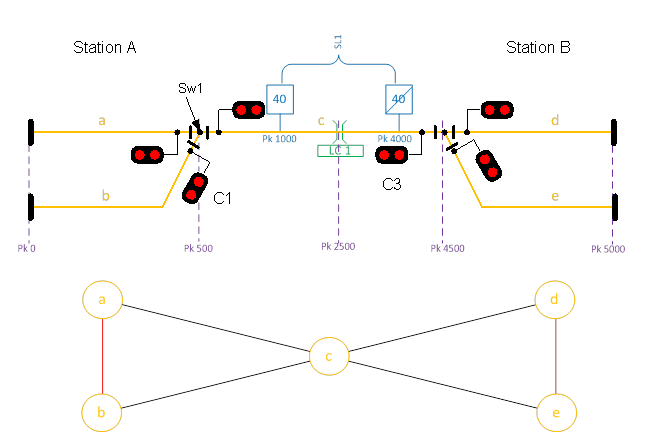RTM for IT architects and developers: Difference between revisions
Jump to navigation
Jump to search
| [checked revision] | [checked revision] |
Ferri Leberl (talk | contribs) (Änderung Navi) |
(formatting, deleted UML) |
||
| Line 14: | Line 14: | ||
== Simple Sample Network == | == Simple Sample Network == | ||
[[File:SampleNetwork1.png|Simple Sample Network Part 1|1000px]] | |||
File:SampleNetwork1.png|Simple Sample Network Part 1 | |||
{{navi | {{navi | ||
|chapter={{rtm}} Quick Start | |chapter={{rtm}} Quick Start | ||
Revision as of 09:30, 15 May 2024
|
The benefits of RailTopoModel® for an IT department can be described mainly at two levels:
- Enterprise architecture:
- Business Architecture: RailTopoModel® provides a rich base to channel the design, with business departments, of the common language at enterprise level, the semantic to be enriched for your own company business objects model.
- IT Architecture: RailTopoModel® provides the foundation to support and implement your global railway IS object structure. As example:
- Design: A base line Railway Object Model to be enriched and customized step by step as foundation of a new IS (think large, act small, ensure scalability)
- Build: Implement an Operational Data Store (Data Lake) to collect/translate, and structure consistently, data coming from heterogeneous legacy systems (initiate new development based on sustainable foundation)
- Transform: Organize decoupling between domains (flexibility, autonomy) while ensuring global consistency.
- Development:
- RailTopoModel® being platform-independent, provides a toolbox to convert object classes in any object oriented languages such as Java, C#, Protobuf, …
- railML.org provides a one-to-one relation between RailTopoModel® and railML® 3 classes (robustness, quality)
- RailTopoModel® leverages the efficiency of development teams for sustainable and quality object oriented coding
Simple Sample Network
| ||||
| ||||
| railML® 2 Wiki – railML® 3 Wiki |

